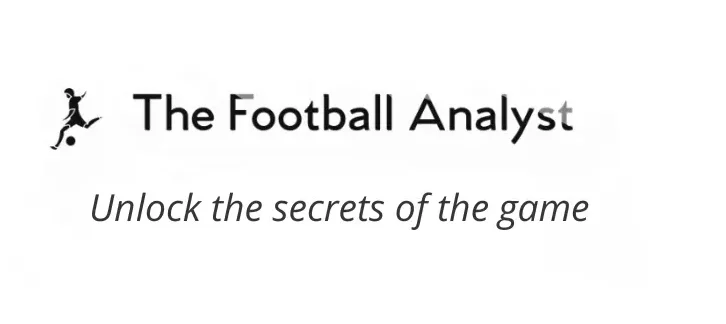In modern football, teams rarely maintain their out-of-possession shape once they regain the ball. The moment possession changes hands, the geometry of the pitch — and the roles within it — begin to transform. Sometimes the changes are subtle, barely perceptible until viewed on replay. Other times they are dramatic, with players flooding forward, stepping into unfamiliar zones, and reconfiguring the team’s structure entirely.
These shifts are not simply “formations” in the traditional sense. They are temporary, context-driven adjustments designed to create superiorities, manipulate the opposition’s defensive structure, and dictate the rhythm of the game. By adapting their shape in possession, teams can optimise space, control tempo, and target opposition weaknesses in ways that a static formation could never achieve.
For coaches, analysts, and scouts, recognising these shifts is vital. A team listed as a 4-3-3 on the team sheet might be anything but in possession. Depending on the moment, it could look like a 3-2-5 in controlled build-up, a 2-3-5 when pinning the last line, or even a 3-1-5-1 in all-out attack. Each serves a different purpose, and each tells a deeper story than the official pre-match graphic.
Why Shapes Shift in Possession
When a team wins the ball, it’s rarely enough to just “get into shape” and pass it around. The real advantage comes from moving players into positions that ask the opposition questions they can’t easily answer. These shifts are deliberate, problem-solving moves that happen in seconds.
Key reasons include:
- Creating numerical superiority – If the opposition presses with two up front, dropping a midfielder between the center-backs turns a 2v2 into a 3v2, making it easier to play out.
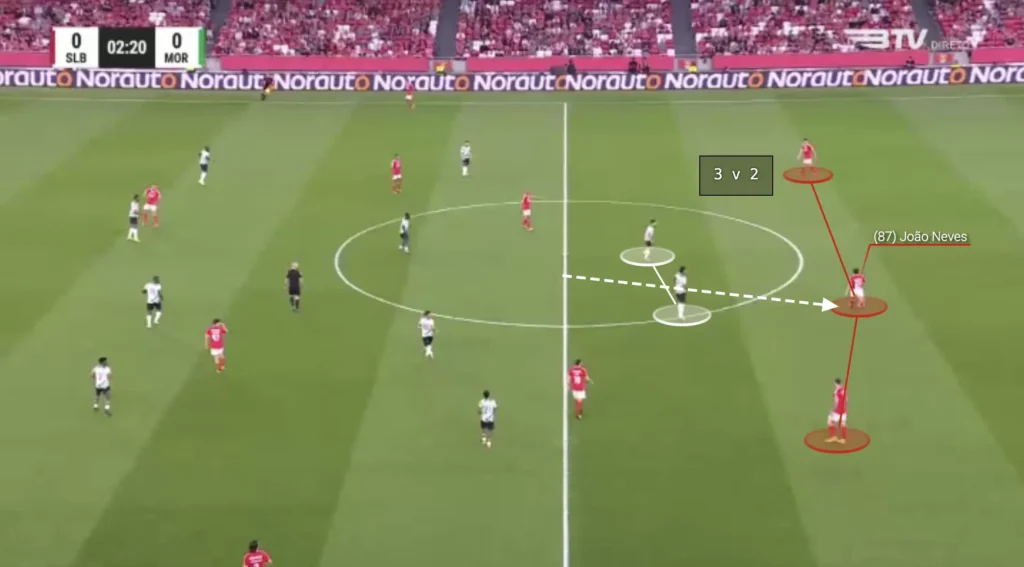
- Manipulating defensive structure – Moving an extra player into the half-space can pull a fullback infield, creating room for an overlapping run.
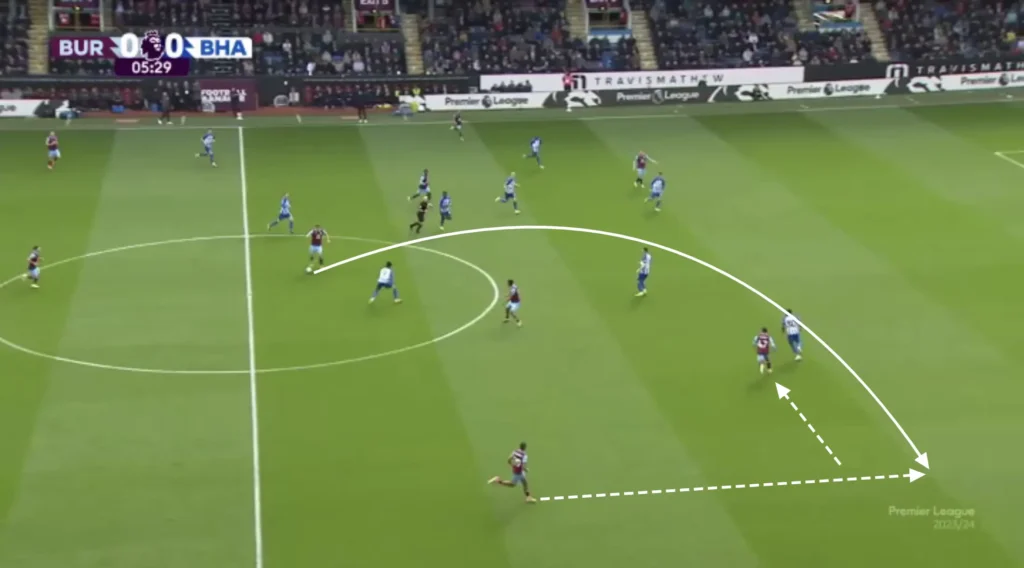
- Occupying optimal attacking zones – Stretching the pitch with five on the last line forces defenders to cover maximum width, opening vertical channels for runners.
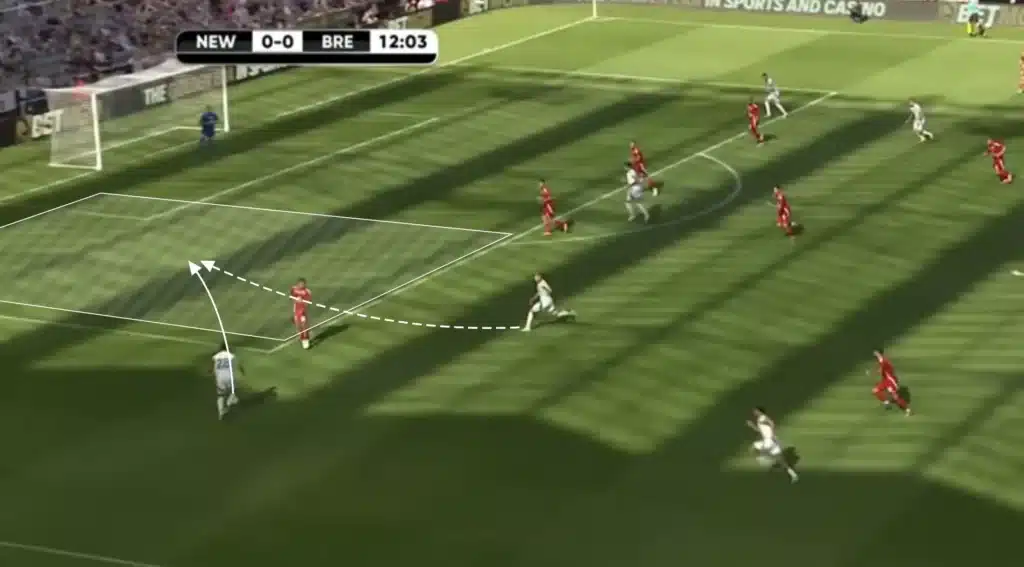
- Overload-to-isolate tactics – Crowding one wing lures multiple defenders over, leaving a far-side winger in a 1v1 or even free.

- Strengthening rest-defence – Even while committing numbers forward, teams keep 2–3 players behind the ball to guard against counters.

The best sides don’t just rely on one version of this. They adapt in real time, switching shapes depending on opponent, ball location, and game state.
Common Triggers for Shape Changes
Shape changes don’t happen randomly — they respond to very specific cues:
- Opponent’s press intensity – Against a high press, extra support is added in the first line (e.g., pivot dropping deep, fullback inverting). Against a low-block, more players step into attacking lanes.
- Ball location – If the ball is in the left half-space, the far-side winger might dart inside to attack the back post, or the near-side fullback might push beyond the winger to create a crossing threat.
- Phase of attack – In build-up, a team might sit in a stable 3-2 structure. Once past halfway, they could shift into a 2-3-5 or a 3-1-5-1 to get more players forward.
- Opponent’s defensive shape – Facing a 5-4-1 often means attacking with more width, while against a 4-4-2, teams may station extra players between the lines.
- Space exploitation opportunities – If the opposition’s fullbacks press high, the wide channels behind them become prime territory for early balls. This can even be a pre-planned trigger: “If their fullback steps up, we go long immediately.”
Common Temporary Possession Shapes
1. 3-2-5 Overload
- Formation mechanics: A fullback inverts next to the pivot to create a double pivot, while the opposite fullback tucks in to create a back three. Wingers stay wide, and two interiors occupy pockets between the lines.
- Purpose: Provides stability in central build-up while keeping five attackers on the last line, stretching the defence horizontally and vertically.
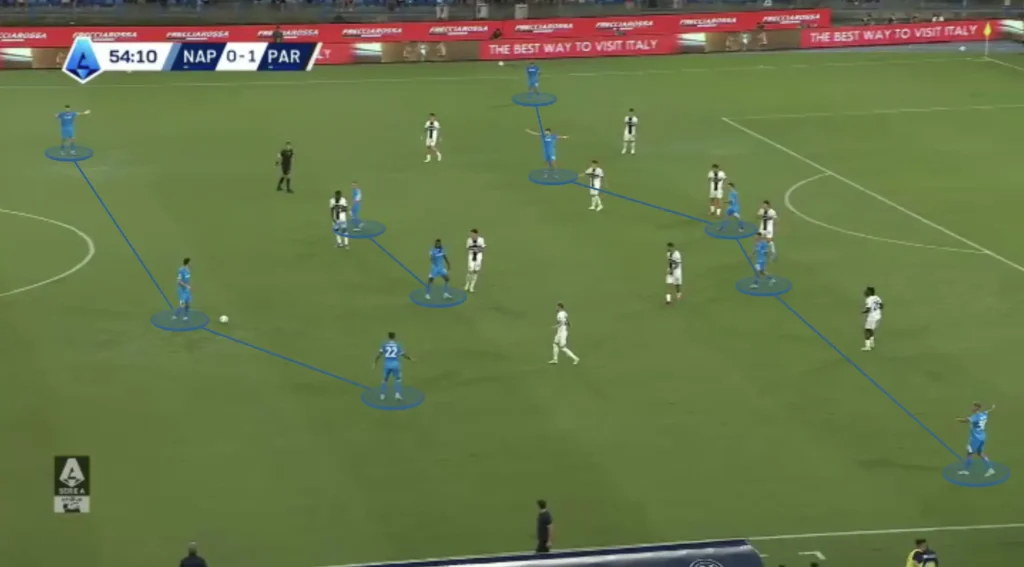
2. 2-3-5 High Control
- Formation mechanics: Both fullbacks move into midfield alongside the pivot, forming a central three. The front five fill each vertical lane.
- Purpose: Dominates central spaces to aid counter-pressing, while keeping width for quick switches.
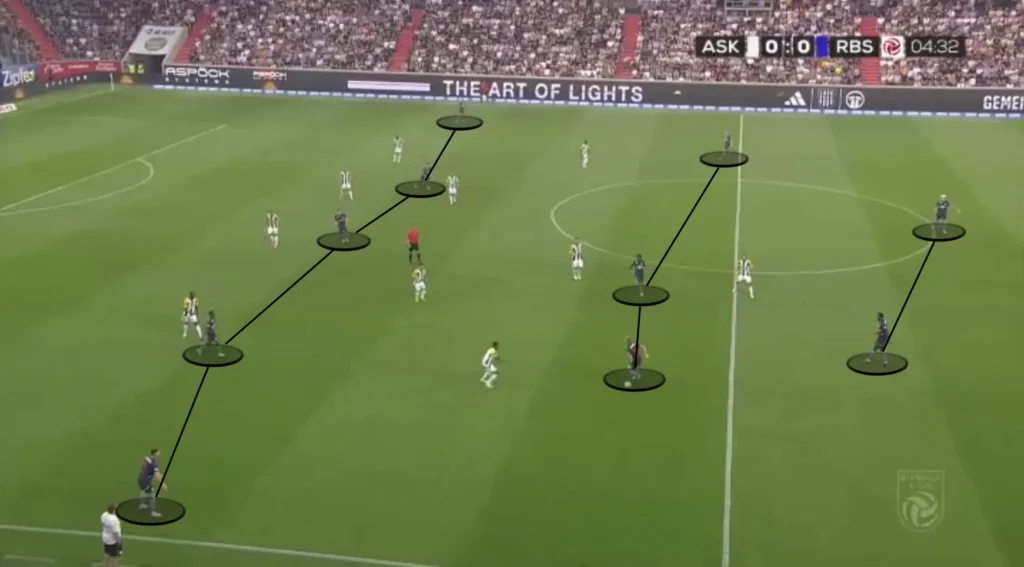
3. 3-1-5-1 Aggressive Direct Structure
- Formation mechanics: One pivot stays deep, while six attackers push high — often including both fullbacks.
- Purpose: Breaks down deep defensive blocks with sheer numbers.
- Risk: Leaves large central spaces unprotected if the ball is lost.
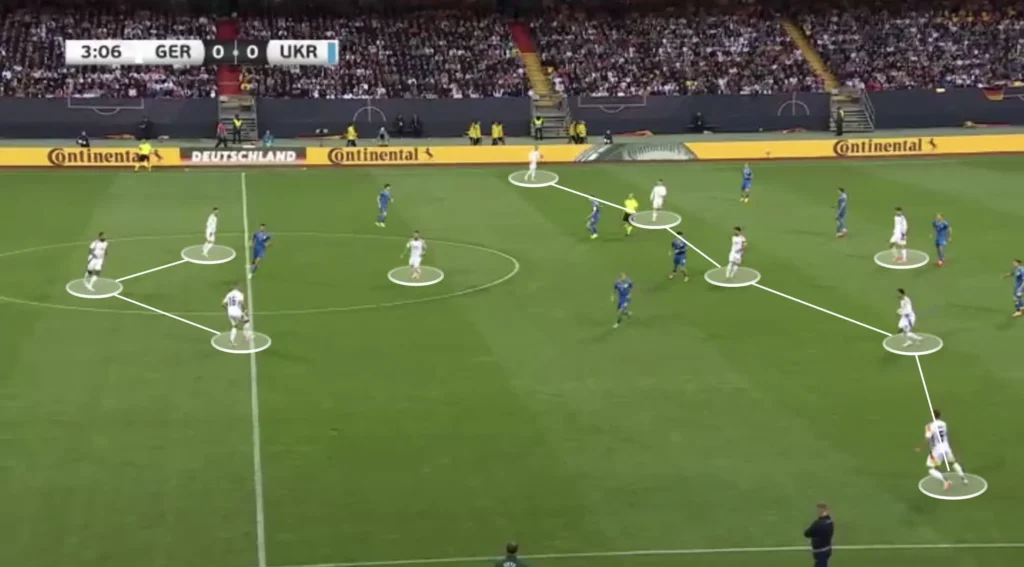
4. 4-2-4 Transitional Threat
- Formation mechanics: The wingers stay high and wide while the fullbacks overlap, supported by a double pivot.
- Purpose: Perfect for quick vertical attacks along wings, stretching the pitch while retaining rest-defence balance.

5. 2-2-5-1 Rapid Progression
Formation mechanics: Two midfielders sit deep protecting the defence while five attackers—often including advanced fullbacks and inverted wingers—push high and wide. A lone striker stays central to finish chances.
Purpose: Ideal for quick, direct progression through the lines, creating overloads in advanced areas while maintaining a solid base to guard against counters.

Player Role Adaptations During Shape Shifts
Executing these changes demands tactical flexibility from players:
- Inverting fullbacks – Moving inside to provide an extra passing option and enhance central compactness.
- Dropping strikers – Adding a midfield body during build-up to resist opposition pressure.
- Advanced interiors – Making runs beyond the forward line to threaten space between centre-backs.
- Wingers as secondary forwards – Attacking central channels while fullbacks provide width.
Elite players like João Cancelo, Bernardo Silva, and Thomas Müller excel at such positional adaptability, allowing their teams to fluidly shift shapes without losing structure.
Advantages of Temporary Shape Shifts
- Tactical flexibility – Easier to adapt against varied opposition setups.
- Optimal space occupation – Ensures all key vertical and horizontal channels are covered.
- Enhanced rest-defence – Better control of opposition transitions without neutering attack.
- Overload creation – Helps force numerical and positional advantages in targeted areas.
Disadvantages and Risks
- Player confusion – Poor communication or unclear triggers can create exploitable gaps.
- Transition exposure – Aggressive shapes may leave space behind the midfield.
- Overcomplication – Excessive rotations can slow the ball and reduce attacking rhythm.
- Physical demands – Constant shifting requires elite fitness and focus.
Practical Coaching Considerations
When integrating shape shifts into a team’s play model, coaches should focus on:
- Clear triggers – Defining when and why to adjust shape in different game states.
- Role clarity – Each player should know their responsibilities in multiple structures.
- Video analysis – Reviewing successful and failed examples to reinforce decision-making.
- Small-sided rehearsals – Using constraints that demand rapid shape transitions.
Conclusion
Formations on paper are only a reference point. The true tactical chess match happens in the constant micro-adjustments teams make in possession. Temporary shape shifts are the hidden language of top-level football — patterns that only become obvious with a trained eye.
For the coach, they are a tool to unlock stubborn defences. For the analyst, they are a blueprint for understanding team identity. And for the player, they are the key to reading and shaping the game in real time.
The next time you watch a match, don’t just note the starting formation. Watch how the shape evolves with every pass, press, and possession phase — that’s where the game’s real story unfolds.
